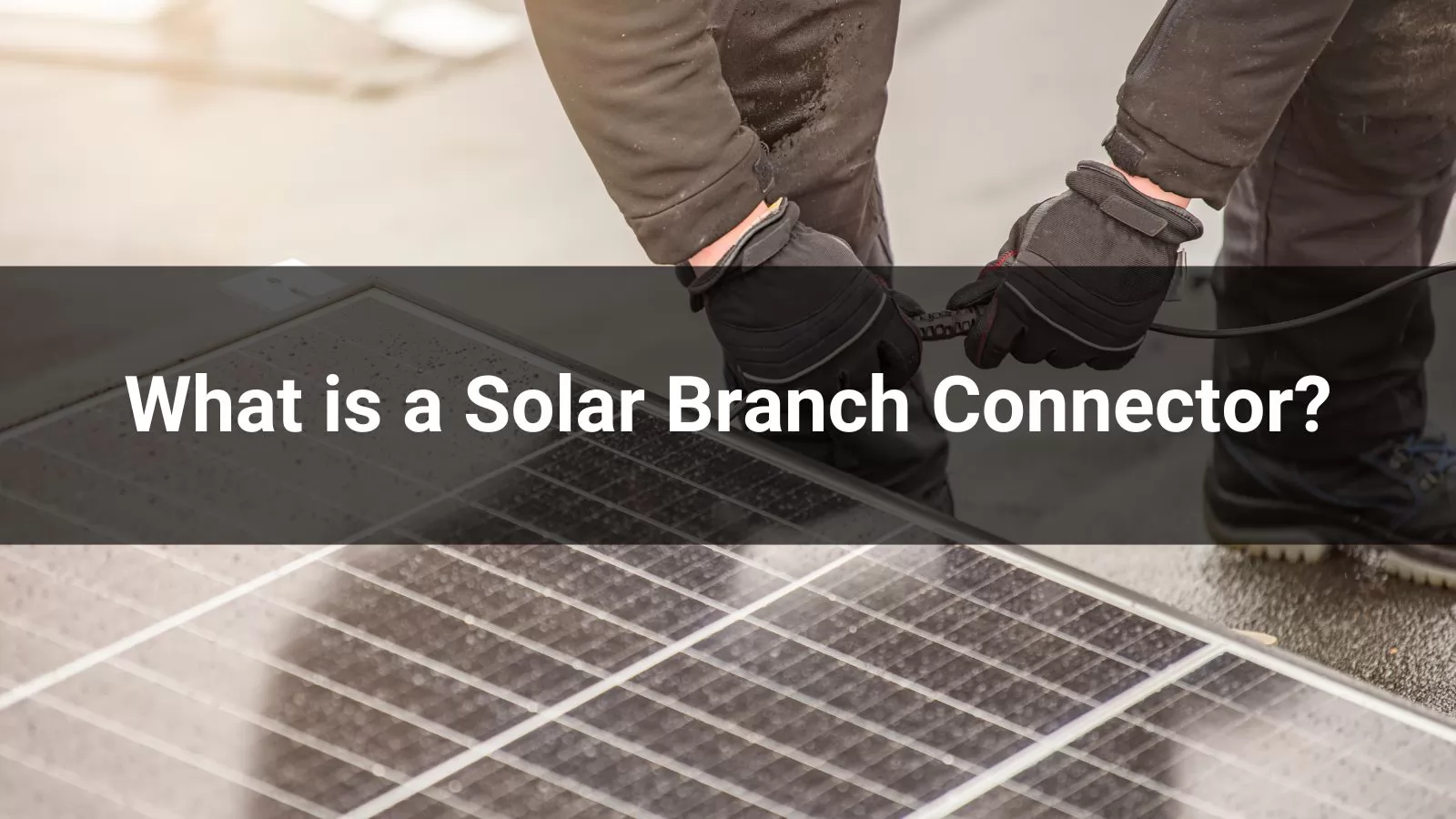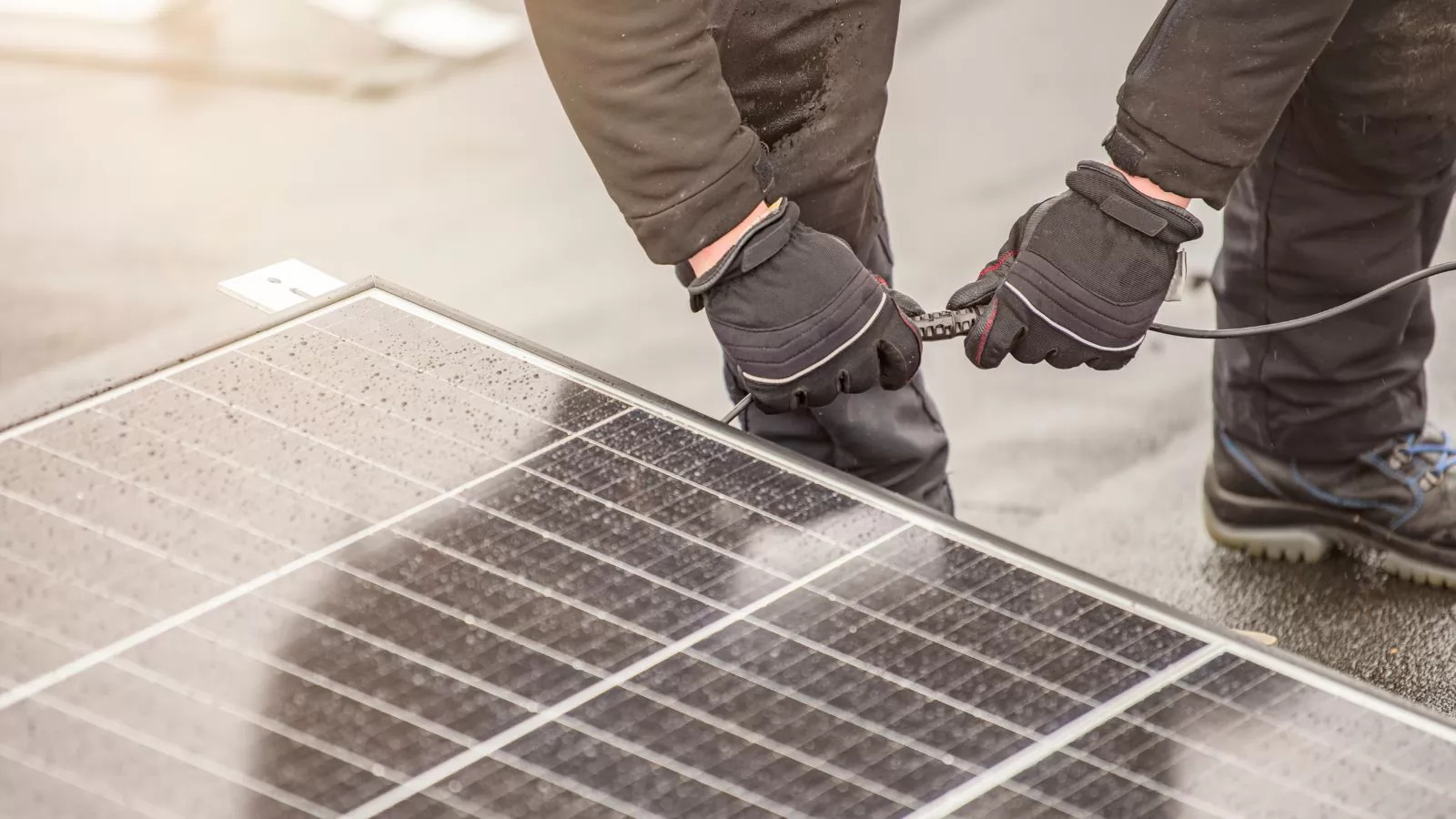
As the solar energy industry expands, so does the complexity of solar power systems. You might have heard of the term Solar Branch Connector, but what exactly is it, and why is it crucial for your solar energy setup? This article is here to demystify it for you, whether you're a project manager, a solar installer, or a business looking to scale your energy infrastructure.
Solar Branch Connectors might seem like small, unassuming components, but they play a huge role in making sure your solar panels are working at their peak efficiency. In a market that is rapidly shifting towards renewable energy, understanding these connectors can make all the difference in scaling your solar project effectively.
In this article, we’ll dive deep into what solar branch connectors are, why they’re essential, their benefits, and the various types available. Let’s get started by understanding the core purpose of Solar Branch Connectors.
What are a Solar Branch Connectors?

If you're in the solar power business or setting up your own system, you’ve probably come across this term quite often. So, what exactly is a Solar Branch Connector?
At its core, a Solar Branch Connector is a small device that connects multiple solar panels to each other, enabling them to work together more efficiently. Think of it as the hub in a wheel – it brings all the different spokes (solar panels) together into a single streamlined energy output.
Technically speaking, Solar Branch Connectors allow for the parallel connection of multiple solar panels. This parallel connection increases the overall current without affecting the voltage of the system. In simple terms, you get more power, but in a way that’s organized and efficient, much like how water pipes join together to channel more water into a single stream.
When connecting solar panels, you can use a series or parallel configuration. Solar Branch Connectors are specifically used for the parallel configuration. This is crucial in larger setups, like commercial solar farms, where maintaining system stability is a must. If you’re looking to scale your solar power system or expand the existing one, Solar Branch Connectors are what will make that possible.
Why Branch Connectors are used?
So why exactly are Solar Branch Connectors such an essential part of the solar power equation? Imagine trying to string together several solar panels without a connector. It would be like trying to plug a bunch of different electronics into a single outlet without a power strip. You could do it, but it would be far less efficient and more prone to errors.
Here’s why Solar Branch Connectors are indispensable in the solar industry:
1.Efficiency and Scalability: Solar Branch Connectors allow you to scale your system without hassle. When you’re installing more solar panels, you don’t need to redo the entire setup from scratch. With a simple connector, you can easily add more panels to the existing system.
2.Safety: These connectors help reduce the risk of loose or improper connections, which could lead to electrical issues, overheating, or even fire hazards. When properly installed, Solar Branch Connectors lock the connection securely, preventing any unwanted disconnections.
3.Organization and Aesthetics: A well-organized solar system doesn’t just perform better; it also looks more professional. By using Solar Branch Connectors, you can avoid messy wiring and create a clean, visually appealing setup. This is particularly important for businesses where appearance matters.
4.Weather Resistance: High-quality Solar Branch Connectors are designed to withstand outdoor conditions. Whether it’s heavy rain, dust storms, or extreme heat, they ensure that your system continues to run smoothly without being affected by the elements.
5.Cost-Effective: While Solar Branch Connectors may seem like a small investment, they save you money in the long run by minimizing system errors, downtime, and maintenance costs. They also reduce labor hours during installation, allowing your team to work faster and more efficiently.
Whether you're expanding a residential solar system or constructing a large-scale commercial project, Solar Branch Connectors are a simple but effective solution to keep everything running smoothly.
The advantages of Branch Connectors
Solar Branch Connectors bring several advantages to your solar power system. It’s not just about connecting panels; it’s about optimizing the way energy flows through your entire setup. Let’s look at the key benefits of using these connectors in detail:
1. Streamlining Energy Output
Without the right connection, your solar panels might generate energy at varying rates. Solar Branch Connectors help in harmonizing these outputs, ensuring that the energy flows evenly through the entire system. This is especially useful in solar farms or any setup with a large number of solar panels.
For example, imagine you're managing a solar farm with 20 panels. Each panel generates different amounts of energy depending on its exposure to sunlight. With a Solar Branch Connector, you can ensure that all this energy is combined efficiently, reducing losses and maximizing output.
2. Plug-and-Play Installation
One of the most user-friendly features of Solar Branch Connectors is their plug-and-play nature. Whether you're an experienced installer or new to the industry, these connectors are simple to use, saving you time and reducing the complexity of installations. Their easy-to-lock design makes them particularly handy when working in tough outdoor conditions.
3. Increased Safety
Safety is a top priority in any electrical system. Poor connections can lead to sparks, overheating, or even short circuits. Solar Branch Connectors are designed with safety mechanisms that lock connections securely in place, preventing accidents. Many high-quality connectors are also IP67 rated, which means they are dustproof and water-resistant, offering extra layers of protection.
4. Reduced Energy Loss
Every bit of energy counts when you're dealing with solar power. Improper connections can lead to voltage drops, which in turn reduce the overall efficiency of your system. Solar Branch Connectors help maintain a stable current and minimize energy losses, ensuring that you get the most out of every solar panel.
5. Expandability for the Future
The renewable energy industry is evolving quickly. Whether you're a business expanding your solar farm or a homeowner adding panels to reduce electricity bills, Solar Branch Connectors make future expansions easy. Instead of overhauling your entire setup, you can simply plug in new panels as needed. This modularity makes them an attractive solution for long-term growth and scalability.
Types of Branch Connectors
When choosing the right Solar Branch Connector for your project, it's important to know that not all connectors are created equal. There are different types designed for various setups, from small residential installations to large-scale commercial farms. Let’s break down some of the most common types of Solar Branch Connectors you’ll encounter:
1. MC4 Solar Branch Connectors
MC4 connectors are the most widely used type in the solar industry. They’re known for their reliability, weather resistance, and ease of use. The MC4 Solar Branch Connector is specifically designed to handle high currents while ensuring a secure connection between multiple solar panels.
Why are MC4 connectors so popular? For one, they feature a safety lock system that prevents accidental disconnections. This makes them ideal for installations where panels will be exposed to harsh outdoor conditions. With an IP67 rating, MC4 connectors are dust-tight and can even be submerged in water temporarily without compromising performance.
2. T-Type Branch Connectors
T-Type Solar Branch Connectors are another popular choice, especially when you need to join two or more solar panels into a single output. These connectors are designed to handle both small and large installations, making them a versatile option.
The “T” shape allows for efficient cable management, which is crucial in larger setups. Like MC4 connectors, T-type connectors are also weatherproof and UV-resistant, ensuring long-term durability in outdoor environments.
3. Y-Type Branch Connectors
For smaller solar setups, Y-Type Branch Connectors offer a compact, easy-to-use solution. These connectors allow you to link two solar panels into one output, effectively “Y-ing” off the connections. This type is typically used in residential or small commercial setups where space is limited but efficiency is still critical.
Y-type connectors are often favored for their simplicity and straightforward design, making them an excellent choice for homeowners who want to manage their own installations.
4. 4-to-1 Solar Branch Connectors
If you’re dealing with a larger system, such as a solar farm, 4-to-1 Solar Branch Connectors are a must-have. These connectors allow you to join four solar panels into a single output, reducing the complexity of the wiring and ensuring that your system is both scalable and manageable.
4-to-1 connectors are built to handle high currents without energy loss, making them a practical option for large installations that require maximum efficiency.
Conclusion
Solar Branch Connectors are a small but critical piece of the puzzle. They allow for efficient, scalable, and safe interconnections between solar panels, whether you’re working on a small residential setup or a large commercial farm. Their ease of installation, durability, and ability to maximize energy output make them indispensable for any solar power project.
Understanding the types of Solar Branch Connectors available and their specific benefits will help you make informed decisions about your solar setup. As a business looking to expand your renewable energy capabilities, investing in high-quality Solar Branch Connectors will not only save you time and money but will also ensure that your system is running at its optimal capacity.
With the right Solar Branch Connector, you’re not just connecting panels—you’re connecting the future of sustainable energy.
.png)

.png)


.png)
.png)
.png)
.png)




